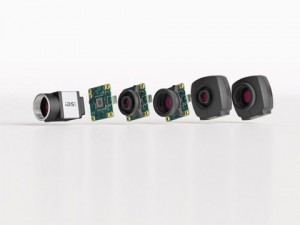IDS adds numerous new USB3 cameras to its range
 In the CP and LE camera series of the uEye+ product line from IDS, customers can choose the right model for their applications from a total of six housing variants and numerous CMOS sensors.
In the CP and LE camera series of the uEye+ product line from IDS, customers can choose the right model for their applications from a total of six housing variants and numerous CMOS sensors.
Anyone who needs quickly available industrial cameras for image processing projects is not faced with an easy task due to the worldwide chip shortage. IDS Imaging Development Systems has therefore been pushing the development of alternative USB3 hardware generations with available, advanced semiconductor technology in recent months and has consistently acquired components for this purpose.
Series production of new industrial cameras with USB3 interface and Vision Standard compatibility has recently started. The models of the uEye CP family are said to be particularly suitable for space-critical applications thanks to their compact magnesium housing with dimensions of only 29 x 29 x 29 mm and a weight of around 50 g. Customers can choose from global and rolling shutter sensors from 0.5 to 20 MP in this product line.
Those who prefer a board-level camera instead should take a look at the versatile uEye LE series. These cameras are available with coated plastic housings and C-/CS-mount lens flanges as well as board versions with or without C-/CS-mount or S-mount lens connections. They are therefore particularly suitable for projects in small device construction and integration in embedded vision systems. IDS initially offers the global shutter Sony sensors IMX273 (1.6 MP) and IMX265 (3.2 MP) as well as the rolling shutter sensors IMX290 (2.1 MP) and IMX178 (6.4 MP). Other sensors will follow.
The USB3 cameras are perfectly suited for use with IDS peak thanks to the vision standard transport protocol USB3 Vision. The Software Development Kit includes programming interfaces in C, C++, C# with .NET and Python as well as tools that simplify the programming and operation of IDS cameras while optimising factors such as compatibility, reproducible behaviour and stable data transmission. Special convenience features reduce application code and provide an intuitive programming experience, enabling quick and easy commissioning of the cameras.
Visit the IDS website for more information















